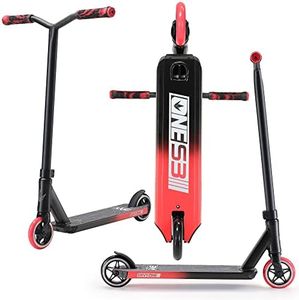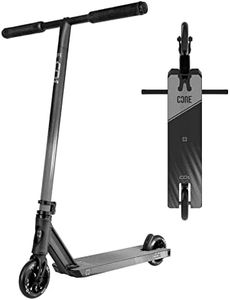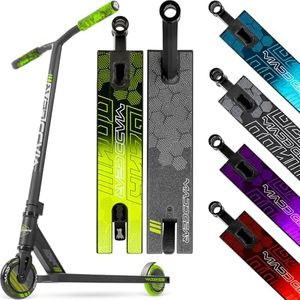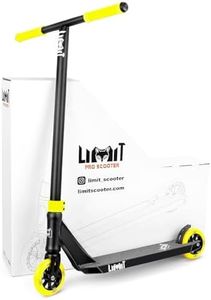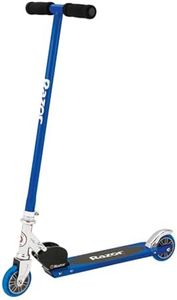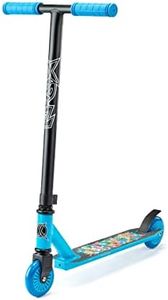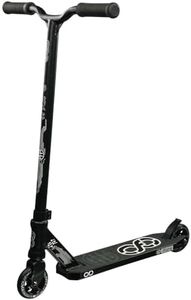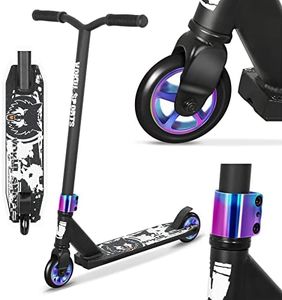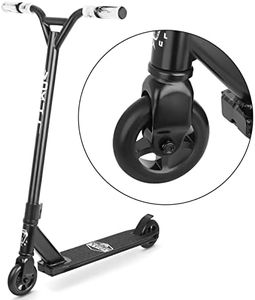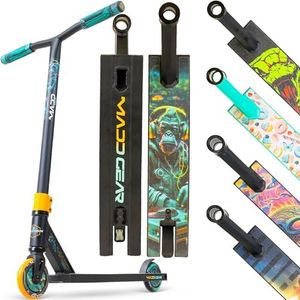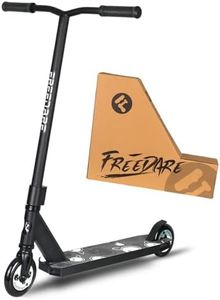We Use CookiesWe use cookies to enhance the security, performance,
functionality and for analytical and promotional activities. By continuing to browse this site you
are agreeing to our privacy policy
10 Best Stunt Scooters For Kids
From leading brands and best sellers available on the web.By clicking on a link to a third party's website, log data is shared with that third party.
Buying Guide for the Best Stunt Scooters For Kids
When buying a stunt scooter for kids, it's important to focus on safety, durability, and suitability for your child's age, size, and skill level. Stunt scooters are designed for tricks and skatepark use, so they are built differently from regular kick scooters. It's essential to look at specific features that will make learning tricks both easier and safer, while also ensuring your child gets the most fun out of their new ride.Deck Size and MaterialThe deck is where the rider stands. The size and material of the deck impact comfort and control. Narrower decks are lighter and easier for tricks, making them ideal for beginners or younger kids, while wider decks offer more stability. When choosing, consider your child’s shoe size and balance ability—smaller riders and beginners will benefit from narrower, lighter decks, while bigger or more experienced kids might prefer something a little wider for added support. Decks are typically made from aluminum for a good mix of strength and lightness.
Handlebar Height and WidthThe handlebar needs to match the rider’s height to ensure comfortable control. Bars that are too tall or too short can make tricks harder and feel awkward. As a general rule, the handlebars should reach somewhere between the waist and hip when standing on the scooter. For young children, narrower bars offer better handling, while older or taller children benefit from slightly wider bars for better leverage and balance during tricks.
WeightThe overall weight of the scooter affects how easy it is to perform stunts and carry the scooter around. Lightweight scooters are best for younger kids or beginners as they make tricks easier to learn, while heavier scooters add more stability but can be harder to maneuver. Pick a scooter weight that your child can comfortably lift and manage—most kids will benefit from the lightest option that still offers durability.
Wheel Size and MaterialWheels for stunt scooters are usually smaller and harder than those on regular scooters, which allows for better trick performance and durability. Smaller wheels (around 100-110 mm) are lighter and quicker to accelerate, while slightly larger wheels provide more speed and a smoother ride. Polyurethane is the standard material, offering a mix of grip and durability. Choose wheel size based on your child's confidence and how they plan to use the scooter—smaller wheels for learning tricks, larger for smoother landings and more comfort.
Compression SystemThe compression system holds the scooter together at the front and affects how solid and smooth the ride feels. Simpler systems are lighter and easier for beginners to maintain, while advanced systems are more durable, suited for older kids who ride harder or attempt bigger tricks. If your child is just starting, a basic, easy-to-maintain system is best. For ambitious riders progressing fast, consider a scooter with a more advanced compression system as they grow.
Brake TypeMost stunt scooters come with a simple spring or flex fender brake over the rear wheel. Flex fender brakes are quieter and smoother, making them a good choice for frequent use. Make sure the brake feels easy to reach and responsive—this helps build confidence for new riders and makes stopping safer and more intuitive.
